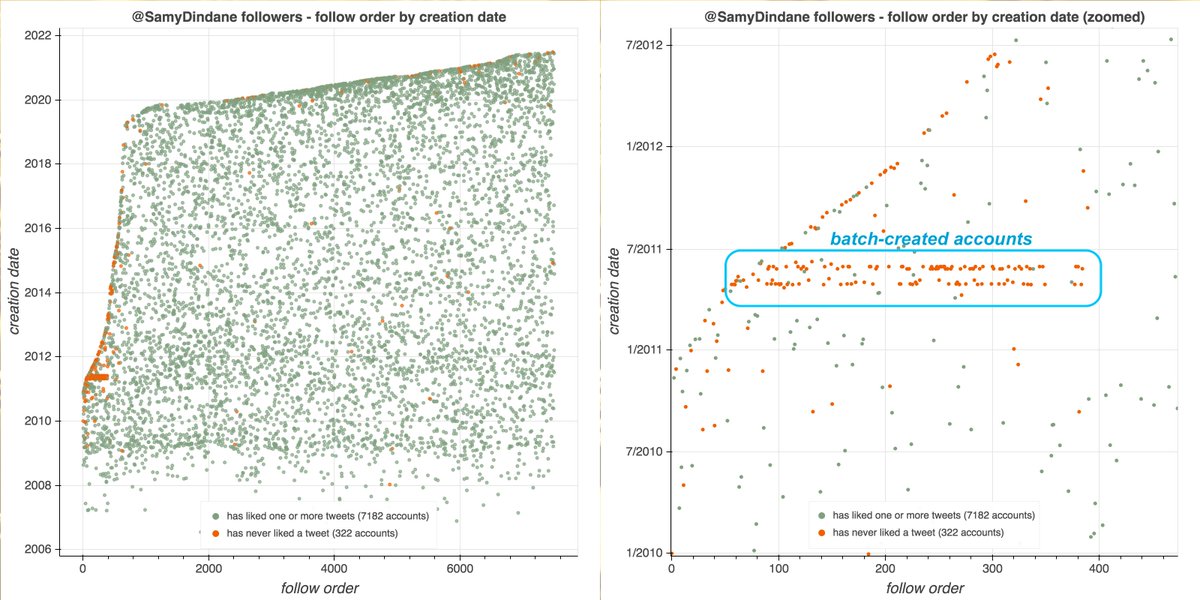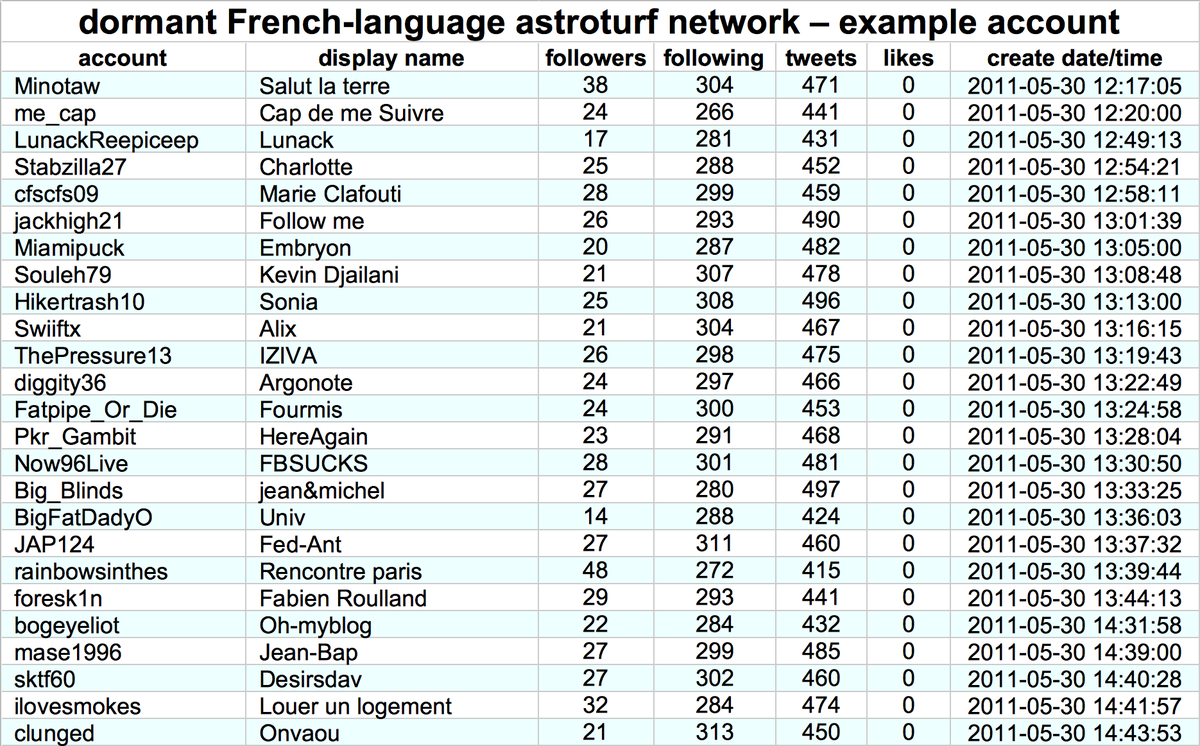It's a Saturday, which is a great day to look at a long-dormant botnet following @SamyDindane, creator of the HypeFury Twitter automation software.
cc: @ZellaQuixote
cc: @ZellaQuixote
https://twitter.com/conspirator0/status/1222697024786706437

We found 110 batch-created accounts (made in 2011) among @SamyDindane's early followers. To find the rest of the network, we downloaded the followers of other accounts followed by those 110 accounts and looked for additional batch-created accounts from the same time period.
The batches show up as horizontal streaks on follow order by creation date plots of the accounts they follow. This slideshow shows some examples, with the batch-created accounts highlighted in red.
We wound up with exactly 300 accounts that appear to be part of the network, created in April and May 2011. All have been dormant since 2013 but tweeted exclusively via "Twitter Web Client" when active, all follow similar numbers of accounts, and none have ever liked a tweet. 





This network's content is mostly in French, with English as the second most frequent language, and is extremely repetitive. Most tweets appear to be ads for various tech products and services. 



Along with the repetitive tweets, this network also reuses profile pics across accounts. Profile pics are a mix of cartoon drawings of people and graphics that look like logos. 

Who does this network actually follow? Mostly smaller French-language accounts, although a few larger French accounts such as @paramountfr turn up as well. Many but not all appear to be accounts with a focus on technology. 

(more info on the follow order by creation date plots used in this thread + source code)
https://twitter.com/conspirator0/status/1408589182944124934
• • •
Missing some Tweet in this thread? You can try to
force a refresh































